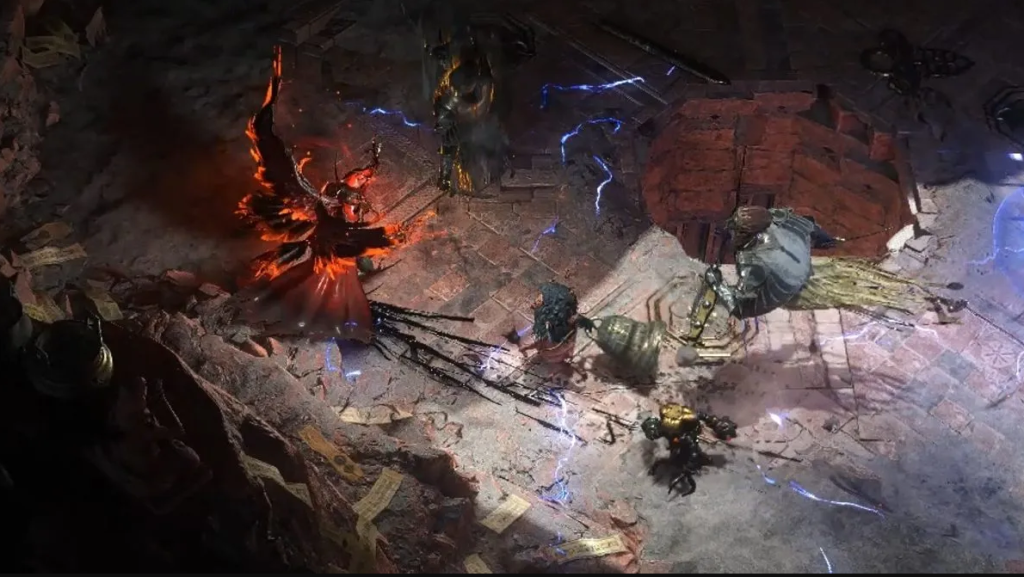
The Complexity of POE 2 Currency Management
poe 2 currency introduces a deep and layered in-game economy, built on the foundation of its predecessor’s complex crafting and trading systems. With dozens of currency items ranging from Chaos Orbs and Divine Orbs to rarer components like Mirror Shards or Fracturing Orbs, players must constantly make choices about how to spend, trade, or invest their resources. Every crafting attempt carries an inherent risk versus reward tradeoff. This depth gives POE 2 much of its strategic appeal but also makes it easy for players to lose significant value with a single poorly calculated move. The need for smarter decision-making has opened the door to the development of automated risk calculators that aim to guide players through this intricate landscape.
What Automated Risk Calculators Do
Automated risk calculators are digital tools, typically web-based or integrated into trading platforms, that evaluate the expected value and potential risk of various currency-related actions. For example, if a player wants to use a set of Exalted Orbs to craft a high-end piece of armor, the calculator will assess the probability of achieving specific modifiers and compare that against the average cost of success. These tools rely on vast datasets from player-submitted statistics, trade APIs, and crafting simulation outcomes to offer a percentage-based view of how risky a certain investment may be.
Beyond crafting, risk calculators can also be used for currency flipping or speculative trading. If a player considers buying large quantities of one type of currency, such as Blessed Orbs, in anticipation of a market rise, the calculator may analyze historical price trends, patch notes, and current supply metrics to advise whether such a move is statistically sound. This information can be vital for players who engage with POE 2’s economy at a high level and are seeking a strategic advantage in league markets.
The Role of Data and Probability in Currency Decisions
One of the major benefits of automated calculators is their ability to make probability accessible to the average player. In many cases, POE 2 crafting relies on incredibly small chances to roll perfect items. Without a detailed understanding of mod weightings and affix tiers, players may waste hundreds of valuable orbs without achieving meaningful results. Risk calculators eliminate some of the guesswork by simulating thousands of outcomes and presenting the likelihood of success in simple percentages. Players can weigh the cost of continuing a crafting project against the option of buying a pre-made item on the trade market.
This is especially relevant in high-end crafting scenarios where the cost of failure can be devastating. For example, rerolling a six-link chest with specific influence and fractured mods can require dozens of Divine Orbs and meta-crafting resources. A calculator can warn players that the odds of hitting all desired prefixes and suffixes in under a certain number of rolls is low, prompting them to reconsider their strategy or opt for incremental upgrades.
Risk Calculators in League Economies and Real-Time Markets
POE 2’s league-based progression model creates rapid market shifts, often within hours of a patch or event launch. Prices fluctuate due to new item drops, skill changes, or crafting mechanic updates. Automated risk calculators integrated with live trade APIs can adapt to these changes in real-time, updating calculations based on the evolving value of each currency item. This functionality allows players to make more informed decisions under pressure, especially during the early days of a league when currency is scarce and every investment matters.
In addition, some calculators allow users to input their own inventory and crafting goals, adjusting calculations based on what they already own. This personalized analysis improves accuracy and makes the tool even more useful for players trying to maximize efficiency with limited resources. Whether planning a budget upgrade or deciding when to liquidate items, these calculators help players manage their risk intelligently.
Community Development and Trust in Automation
Most of these tools are developed by the community, often maintained by programmers and economy enthusiasts who have deep experience with POE’s systems. Because the game lacks an official risk analysis system, players rely heavily on the transparency and reliability of these third-party calculators. Trust is earned through consistent accuracy and regular updates that reflect changes in game mechanics. Open-source models or those with published methodology tend to gain stronger followings, as players appreciate seeing the assumptions behind the numbers.
As these tools continue to evolve, integration with other features like crafting planners, build guides, and item filters is becoming more common. A truly integrated platform might soon allow players to go from build planning to risk evaluation to market buying within a single interface, streamlining the experience and reducing the chances of costly mistakes. This represents a significant step forward in how players interact with the complex economy of POE 2 and how they make long-term investment decisions.